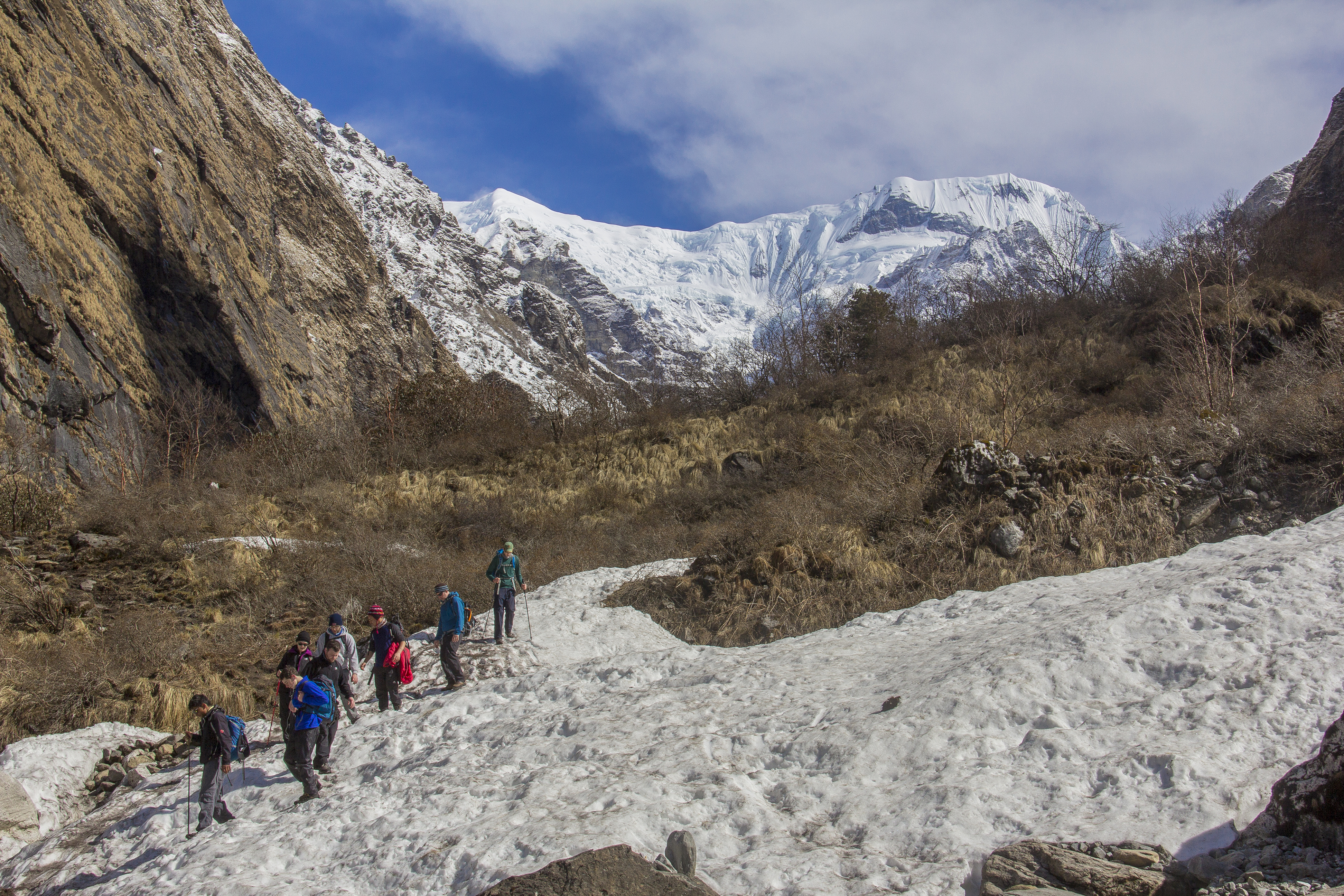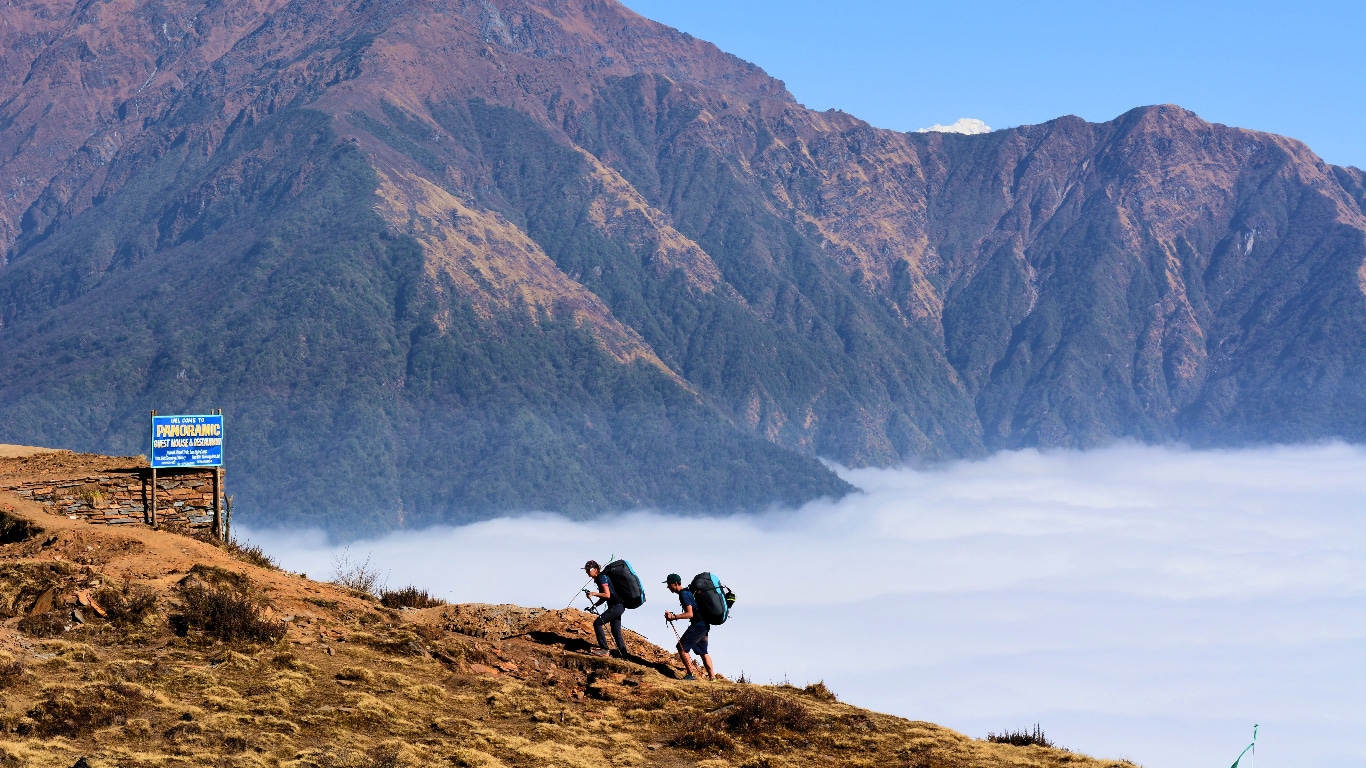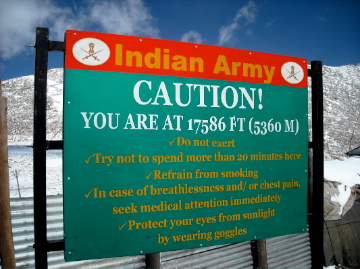Altitude sickness is a disorder caused by being at high altitude, where oxygen levels are low, without gradually getting used to the increase in altitude.
It is also known as acute mountain sickness (AMS), altitude illness, hypobaropathy, Acosta disease, puna, and soroche.
 The condition occurs at altitudes higher than 8,000 feet (ft), or 2,500 meters (m). Many ski resorts are located at an altitude of 8,000 ft.
The condition occurs at altitudes higher than 8,000 feet (ft), or 2,500 meters (m). Many ski resorts are located at an altitude of 8,000 ft.
This MNT Knowledge Center article will look at the causes, symptoms, diagnosis, treatment, and prevention of altitude sickness, as well as how to recover.
Quick facts on Altitude Sickness:
- At higher elevations, the number of oxygen molecules per breath decreases.
- Rising to a high altitude without acclimatizing can cause fluid to build up in the lungs and brain.
- Symptoms of altitude sickness include weakness, sleepiness, and lack of appetite.
- The main causes are climbing to a great height too quickly or staying at that height for too long.
- There are a number of treatments for altitude sickness, but the individual should first slowly descend.
Symptoms of Altitude Sickness:
The severity of symptoms depends on several factors, including:
- the age, weight, blood pressure, and general fitness of an individual
- how fast a person climbs to 8,000 ft
- the amount of time spent at a high altitude
 The primary symptom of altitude sickness is a headache. However, this is also one of the symptoms of dehydration.
The primary symptom of altitude sickness is a headache. However, this is also one of the symptoms of dehydration.
For an accurate diagnosis, the individual needs to reach least 8,000 ft and have a headache. They must also demonstrate one of the following signs and symptoms:
- lack of appetite, nausea, or vomiting
- exhaustion or weakness
- dizziness
- insomnia
- pins and needles
- shortness of breath upon exertion
- feeling sleepy
- general malaise
- swelling of the hands, feet, and face
The following signs may indicate a more serious presentation of altitude sickness or one of its complications.
Fluid in the lungs can cause the following:
- a persistent dry cough, often with pinkish sputum
- fever
- panting, even while resting
Signs of swelling of the brain include:
- a persistent headache that does not respond to painkillers
- unsteady gait or clumsiness
- increased vomiting
- gradual loss of consciousness
- numbness
- dizziness
Chronic vs. Acute Altitude/Mountain Sickness
 Chronic mountain sickness, also known as Monge’s disease, develops after spending an extended time living at an altitude of over 9842 ft (3,000 m). Acute mountain sickness is experienced shortly after ascending too rapidly to a high altitude.
Chronic mountain sickness, also known as Monge’s disease, develops after spending an extended time living at an altitude of over 9842 ft (3,000 m). Acute mountain sickness is experienced shortly after ascending too rapidly to a high altitude.
Causes of Mountain Sickness:
The main cause of altitude sickness is ascending to a great height too rapidly. Climbing too high and staying there for too long may also cause it.
At sea level, the atmospheric concentration of oxygen is approximately 21 percent and the barometric pressure averages 760 millimeters of mercury (mmHg).
Higher altitudes do not change the atmospheric oxygen concentration. However, the number of oxygen molecules per breath decreases.
At about 18,000 ft (5,500 m), each breath contains approximately half of the oxygen found at sea level.
The person has to breathe faster to compensate for the oxygen shortfall, and the heart has to beat faster too. Even though breathing faster raises blood oxygen levels, they do not reach sea level concentrations.
Rising to higher altitudes can also cause fluid to leak from tiny blood vessels, resulting in a potentially dangerous fluid buildup in the lungs and the brain. If a human continues rising to higher altitudes without becoming acclimatized, there is a serious risk of life-threatening illnesses.
The human body needs to adapt to the lower air pressure and decreased levels of oxygen. A gradual progression is therefore needed. This slower climb is known as acclimatization.
The average human body needs from 1 to 3 days to become acclimatized to a change in altitude.
 People who do not spend enough time acclimatizing to a new altitude before progressing further have the highest risk of developing altitude sickness.
People who do not spend enough time acclimatizing to a new altitude before progressing further have the highest risk of developing altitude sickness.
With less oxygen in the blood, the heart and lungs have to work harder. This raises the pulse and the rate of breathing. More red blood cells are made to enable the body to carry more oxygen. The body responds to a change in altitude by altering blood acidity level, lung pressure, electrolyte levels, and fluid and salt balance.
Chronic mountain sickness appears to have a genetic link. Studies discovered that two genes, ANP32D and SENP1, are more common in people who experience chronic mountain sickness.
Diagnosis Of Mountain/Altitude Sickness:
If a person has climbed to an altitude higher than 2,500 ft (762 m) and has a headache as well as at least one of the above symptoms, an accurate diagnosis is fairly straightforward.
Anyone who develops these symptoms should immediately stop ascending, or even go down to a lower level and rest until symptoms have completely gone.
It is important to recognize the symptoms, as there are limited medical services available while you are hiking up a mountain.
Treatment Of Mountain/Altitude Sickness:
People with very mild symptoms may continue ascending but at a much slower pace. It is important to let others know of even the slightest hint of symptoms.
Those with more severe symptoms should:
- rest
- consume plenty of fluids
- avoid smoking
There is a range of options to resolve the condition, including:
Descending: Moving to a lower altitude is probably the best action to take if symptoms develop. People with moderate symptoms usually respond well if they descent just 1,000 ft (305 m) and stay there for 24 hours. If the individual with moderate symptoms remains at this lower altitude for a couple of days, their body will become acclimatized, and they can start ascending again.
People with severe symptoms should descend at least 2,000 ft as soon as possible. There is a risk of serious or life-threatening complications. People whose symptoms do not improve after descending this distance should move further down the mountain until they start feeling better.
Pure oxygen: Giving pure oxygen can help a person with severe breathing problems caused by altitude sickness. Physicians at mountain resorts commonly provide this treatment.
A Gamow bag: This portable plastic hyperbaric chamber can be inflated with a foot pump and is used when a rapid descent is not possible. It can reduce the effective altitude by up to 5,000 ft (1,500 m). It is usually used as an aid to evacuate people with severe symptoms, not to treat them at high altitude.
Painkillers: Acetaminophens, such as Tylenol, can be taken for headaches. Ibuprofen, an anti-inflammatory medicine, can also help.
 Acetazolamide: This medication corrects the chemical imbalance in the blood caused by altitude sickness, as well as speeding up the breathing rate. If the person can breathe more quickly, their body will have more oxygen, resulting in the relief of some symptoms, such as nausea, dizziness, and headaches. This medication may cause some side effects, including pins and needles in the face, fingers, and toes, as well as excessive urination, and, in rare cases, blurred vision.
Acetazolamide: This medication corrects the chemical imbalance in the blood caused by altitude sickness, as well as speeding up the breathing rate. If the person can breathe more quickly, their body will have more oxygen, resulting in the relief of some symptoms, such as nausea, dizziness, and headaches. This medication may cause some side effects, including pins and needles in the face, fingers, and toes, as well as excessive urination, and, in rare cases, blurred vision.
Dexamethasone: This is a potent steroid hormone with qualities that suppress immune activity and inflammation. It is 20 to 30 times more potent than hydrocortisone and 4 to 5 times the strength of prednisone, and it reduces swelling of the brain. People usually experience an improvement in symptoms within approximately 6 hours. This medication has some possible side effects, including stomach pain, depression, and euphoria.
Nifedipine: This a dihydropyridine calcium channel blocker, commonly used for the treatment of high blood pressure. It is effective for treating fluid buildup in the lungs. This medication reduces the narrowing of the pulmonary artery, reducing chest tightness and making breathing easier. As it can cause blood pressure to suddenly drop, people are advised not to get up too quickly after taking this medication.
Complications Of Mountain/Altitude Sickness:
More severe symptoms generally occur at over 12,000 ft (3,600 m). Acute mountain sickness can progress to High Altitude Pulmonary Edema (HAPE) or High Altitude Cerebral Edema(HACE).
The two main altitude sickness complications are high altitude edemas of the lungs and brain.
High Altitude Cerebral Edema (HACE):
A lack of oxygen causes fluid to leak through tiny blood vessels into the brain, which leads to swelling. Usually, HACE occurs when a person stays at high altitude for at least one week.
If left untreated, there is a very high risk of death. The affected person should immediately descend by at least 2,000 ft (610 m).
One team of researchers found that MRI scans demonstrated traces of bleeding in the brain years after the initial incident in many mountain climbers with HACE.
Team leader, Michael Knauth, M.D., Ph.D., advises the following:
“HACE is a life-threatening condition. It usually happens in a hostile environment where neither help nor proper diagnostic tools are available. It was previously thought that HACE did not leave any traces in the brains of survivors. Our studies show that this is not the case. For several years after, microhemorrhages or microbleeds are visible in the brains of HACE survivors.”
High Altitude Pulmonary Edema (HAPE):
Fluid builds up in the lungs, preventing oxygen from getting into the bloodstream. As HAPE progresses and blood oxygen levels drop, a number of symptoms develop, including:
- a blue tinge to the skin
- breathing difficulties
- a tight chest
- a persistent cough with pinkish sputum
- exhaustion and weakness
- confusion and disorientation
If left untreated, this complication can be fatal.
In a similar way to HACE, the affected individual should descend by at least 2,000 ft immediately.
Both of these conditions are uncommon but may occur if a person ascends to a very high altitude too rapidly and stays there.
Prevention Of Mountain/Altitude Sickness:
If the ascent takes place on a remote mountain, it is important to be prepared.
Precautions include:
- Acclimatization: The best way to prevent altitude sickness is to ascend gradually so that the body can become acclimatized to the changing altitude. Plan thoroughly and make sure any trip includes enough time for acclimatization. Make sure everyone in the group is fully acclimatized before climbing further.
- Vacation packages: Take caution with vacation packages that promise to ascend a mountain in just a few days.
- Fluids: Consume between 4 to 6 liters of water per day.
- Food: Eat a high-calorie diet while at high altitude.
- Sleeping: At an altitude of over 9,800 ft (2990 m), ascend no more than 985 ft (300 m) each night. In other words, do not sleep at more than 985 ft higher than your resting place the previous night. Even if you ascend more than this during the day, come back down before sleeping so that you are no more than 985 ft higher than the previous night when you go to sleep.
- Avoid smoking: Do not smoke.
- Alcohol: Do not consume alcoholic drinks.
- Acetazolamide and dexamethasone: These medications can be used to prevent altitude sickness.
- Moderate symptoms: People with moderate symptoms should stay at their current altitude until the symptoms have resolved completely.
- Other medications: Some medications may make symptoms worse while at high altitude or ascending, including tranquilizers and sleeping pills.
If you enjoy climbing, there is no need to stop as long as you take the correct preventative steps.
Plan Your Tour With Us
Let us help you get the best out of your holidays and a hassle-free trip. Tell us more about your travel plans and we certainly offer you something of your choice & budget.
Home| Blog | About Us | Instagram |Work With Us | Store


